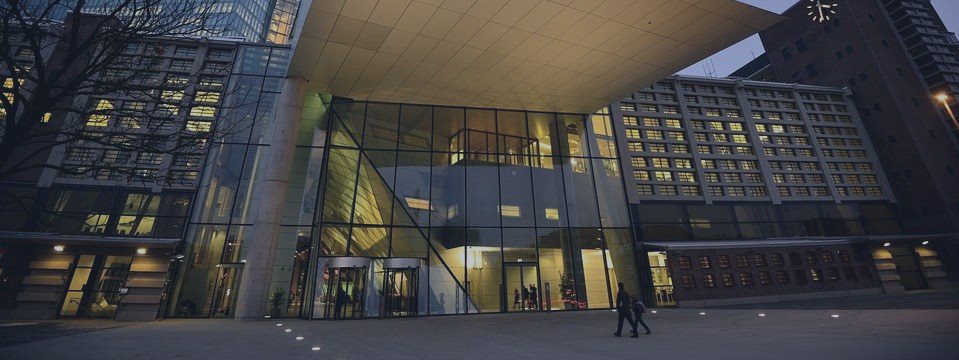
Euro Exchange Rates Forecast to Remain Firm Despite ECB
Economists believe the warning for further quantitative easing at the European Central Bank (ECB) is already been baked into the euro to dollar exchange rate.
Euro exchange rates are sharply lower on Thursday the 22nd of October after ECB President Draghi said the governing council have discussed further policy actions including a further cut in the deposit rate from the current level of -0.2%.
Draghi also reiterated that the bank is ready to act if necessary and is open to use all tools to achieve its mandate.
The President said the downside risks are due to the output gap, low inflation due to further fall in the energy prices, a slowdown in the EMS and an almost 8% appreciation in the EUR exchange rate.
The widely-held view is that should the ECB hint at an extension / expansion to the monthly €60BN cash injection from the ECB the euro will fall.
Euro Weakness to be Limited
But we have heard from two leading European economists that the euro exchange rate complex is already trading at levels consistent with an extension being announced.
“Our estimates suggest that 2 big figures worth of ECB QE is currently priced into EUR/USD (ie, the short-term EUR/USD fair value is modestly above 1.15). Such a discount has been constantly priced into EUR/USD since mid-September,” says Petr Krpata, Foreign Exchange Strategist with ING.
George Saravelos, Deutsche Bank’s Head of European Foreign Exchange, believes an extension of ECB QE beyond September 2016 makes sense but it is already priced:
“The easiest way to see this is in the EONIA curve. It troughs at the turn of next year, indicating that the market is already expecting the peak in liquidity to happen after September 2016.”
It will take an extension well beyond Q1’17 for a surprise, but even then the impact could be modest argues Saravelos.
It is not clear that the governing council is feeling the pressure to be more aggressive than an extension.
While an interest rate cut could theoretically be announced, (as in Switzerland, Denmark and Sweden) Draghi would have to backtrack from the council position that rates are at the lower bound.
The pace of ECB buying could also go up, made more powerful with a shift in purchasing away from GDP weights. But the domestic data is holding up so far, most recently highlighted by Monday’s ECB lending survey.
“The above does not leave us with high expectations for today’s ECB meeting, even if December action is clearly signalled,” says Saravelos.
Deutsche Bank are still however sticking with their EUR/USD forecast for a move down to the year lows by year-end.
This is an important take-away from Sarvelos:
“Leveraged fund short-covering has been the primary support for EUR/USD in recent months, but the medium-term trend of real money outflows continues unabated. The latter remains a fundamental driver of our bearish euro view.”
ING Forecast Range Trading in EURUSD
ING’s Krpata says the euro is trading below fair value because the market currently prices in either (a) an extension of the current pace of EUR60bn monthly purchases by another two quarters or (b) a top up of the current programme by almost EUR30bn per month over the remainder of the programme.
“We think the latter point (b) is unrealistic. This means that the market’s base case is a QE extension by two more quarters until the end of 1Q16,” says Krpata.
It thus appears that the bulk of the ECB additional QE is priced into EUR/USD, meaning that ECB-induced downside to EUR/USD should be limited.
Equally, ING don’t expect much of a rebound in EUR/USD (beyond the two big figures of QE currently priced in) should the ECB decide not to top up/extend the QE.
“For EUR/USD to move meaningfully above the 1.15 handle and stay there, either US short-end rates have to fall even more from here (ie, even more dovish market pricing of the Fed’s outlook), or the EZ rates have to start rising. Both are unlikely at this point,” says Krpata.
ING’s scenario analysis suggests that for EUR/USD to move meaningfully above the 1.20 level, we would have to see a rise in short-dated EZ rates by at least 30bp (assuming no extension of the ECB QE programme and unchanged US rates).
However, the Dutch bank believes such a move is unrealistic at this point when the ECB is present in the market.
This may well happen in 2H16 (by then analysts expect EUR/USD to bottom and start an appreciation trend) but not now.
“In the absence of the Fed’s move, expect a broad EUR/USD range trading. Should the Fed hike rates in December (ING base case), we expect EUR/USD to move towards/below the 1.10 level,” says Krpata.


